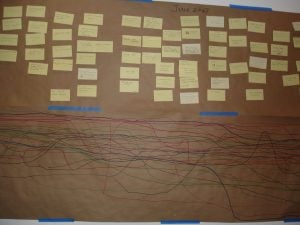The Creation Experience Does Not Mirror a User’s Product Experience
I wrote about how I felt about milestones after achieving a significant milestone last week (How Do You Feel When You Achieve a Significant Milestone?) I specifically wrote about my feelings.
During a discussion on LinkedIn, a reader suggested I start with the last sentence I wanted to leave my readers with. Then build back up from there.
That’s a great idea. It’s not how I write. I don’t know what the last sentence will be until I write all the other sentences before. (Do I craft that last sentence? Of course. After I’m done.) (I don’t know of any writers who can start from the last sentence and work backward, but I bet someone can!)
I know the problem(s) I want to solve. I know how I want people to feel when they’re done reading. I often want people to feel hope. And, that they can solve their problems.
But, how I get there?
My creation experience is not the same as the reader experience.
The Product Doesn’t Include Your Feelings
We experience the same in our work. Here’s an easy way to see it. Conduct a retrospective with a timeline of events and how people felt at the time those events occurred.

This image is a timeline from a real retrospective I facilitated many years ago. The events are on the top.
Notice the lines that go up and down on the bottom. Those lines are how people experienced the exact same events. (The customers loved the product. The large program wanted to repeat their product success without some of the creation pain.)
When your team spikes to explore, and your spike tells you data you don’t like, how do you feel? You might feel any of these:
- Excitement because you know it’s not that solution.
- Disappointment, because you really wanted it to be that solution.
- Dread, because you don’t think you have enough time to find any other solution and that one didn’t work, dammit.
Or, any other feelings.
When we finally get things to work and solve a customer’s problem, how do we feel?
I feel good—about the solution, how I think the customer will feel, and about my contribution to solving that problem.
Unless I have short feedback cycles with my customer, I have no idea how the customer will feel. None at all. The customer experience often occurs weeks, months, or years after I’m done.
And, the customer didn’t see my sweat, my frustration, my dead ends. The customer sees the final product. Even if the customer sees progress to the final product, unless I have one customer and that customer sits with me, the customer only sees the final product.
My creation experience does not mirror the customer’s product experience.
That’s why I don’t worry about the creation messiness. With short-enough feedback cycles, I can fix almost anything and make it great. And, the customer has no idea about the messiness.
We don’t notice as much when we succeed. We notice when we fail. That’s why I like short feedback cycles so I can learn early.
Let’s remember this: Our users/customers experience the product differently from the way we create it.
Published on Java Code Geeks with permission by Johanna Rothman , partner at our JCG program. See the original article here: The Creation Experience Does Not Mirror a User’s Product Experience Opinions expressed by Java Code Geeks contributors are their own. |


